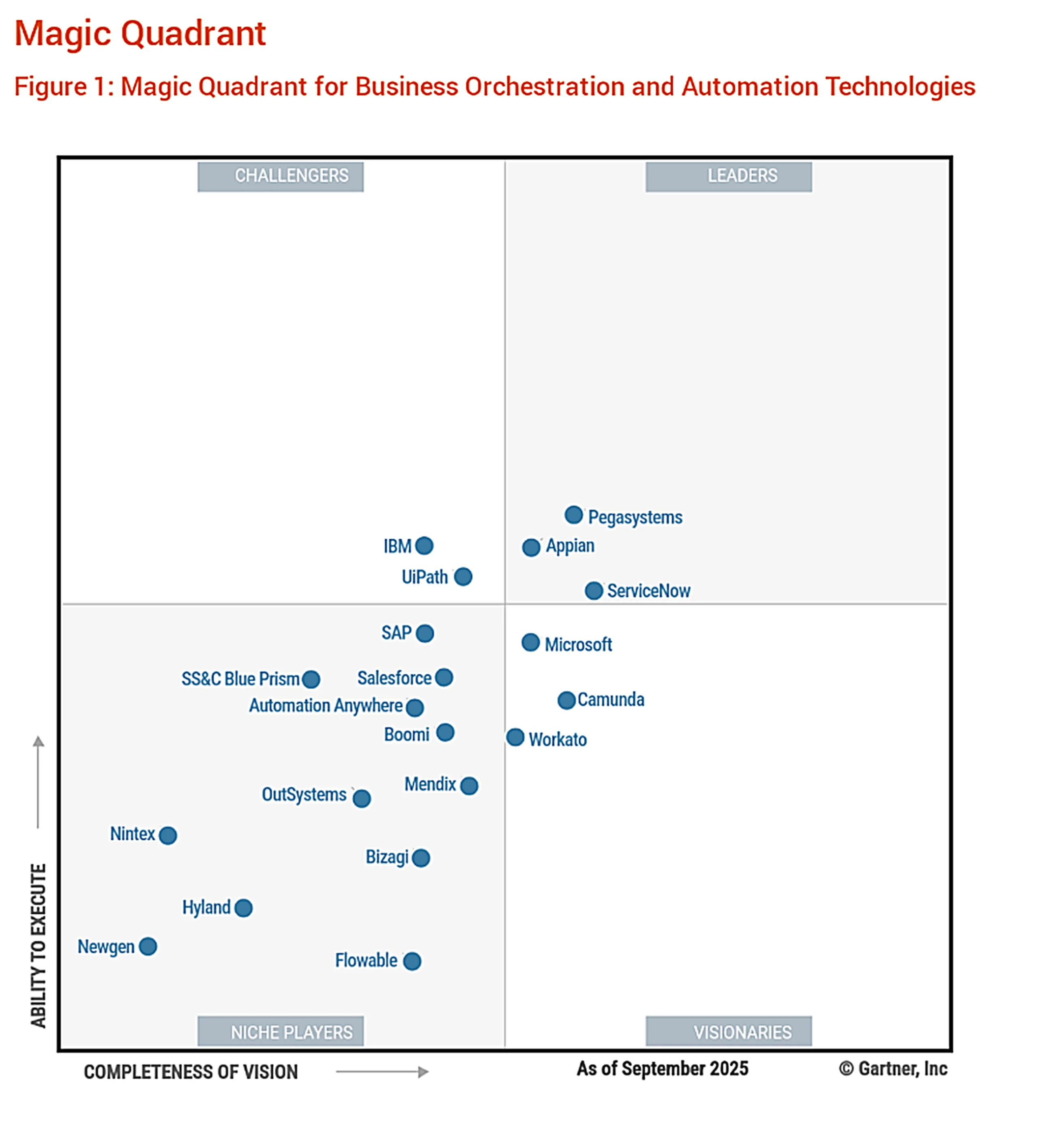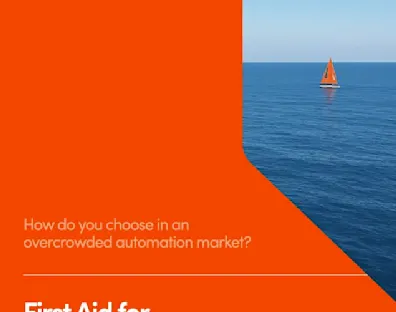

Floris Weegink
Field CTO
4 min read
27 October 2025
BOAT is not a Swiss army knife, and that’s a good thing
Gartner has released its first-ever Magic Quadrant for Business Orchestration and Automation Technologies (BOAT). A milestone — but also food for discussion. Because while the market moves toward massive all-in-one platforms, we believe in something else entirely: the power of specialization.
The automation world had been waiting for this: Gartner’s overview assessing RPA, iPaaS, low-code, and BPA vendors on their “BOAT worthiness”; their ability to deliver enterprise-wide automation. But behind the glossy visual lies a blind spot.
What is BOAT again?
BOAT stands for Business Orchestration and Automation Technologies: software platforms that enable enterprise-wide automation through:
- Process orchestration (the “O” in BOAT)
- Integration via APIs (iPaaS)
- Low-code application development (LCAP)
- Task automation (RPA)
- AI agents and document processing
Some vendors try to pack all these capabilities into one platform. In theory, that sounds ideal. In practice, it’s like a Swiss army knife: handy on the road, but not what you use to cut down a tree or build a house.

Gartner’s blind spot
What the Quadrant fails to show is that technology never operates in a vacuum. You can have the most impressive suite in the world, but if it doesn’t fit your business dynamics, it adds little value.
Gartner assesses vendors on completeness of vision and ability to execute, but misses a third — arguably the most important — dimension: fit to business.
Magic Quadrants provide market overview, not business context. Different platforms solve different problems — and which one solves your problem best, you won’t find in a chart. You need to know what you need and validate who truly delivers it.
Who are you, and what do you really need?
It starts with your organization’s DNA. Are you a bank with tightly regulated, auditable processes? Then you don’t need an AI playground — you need a solid orchestration platform.
Or are you a retailer with countless moving parts and constant change? Then an integration platform is your lifeline — connecting systems, data, and channels so you can adapt instead of react.
Even within one organization, needs differ by department. Customer service teams handle unstructured information that must flow seamlessly into structured processes. That’s where intelligent document processing and light orchestration shine — not a bloated enterprise suite trying to do it all.
And how do you know if a vendor truly fits?
Follow the money. Where does 80% of their revenue come from? That’s where their real focus lies. If you fall into the remaining 20%, you’re probably funding a roadmap built for someone else.
The myth of the all-in-one platform
Gartner predicts that by 2030, 70% of companies will move to a single, consolidated automation platform. The market is shifting toward large IT “suites” claiming to do it all, from integration to AI agents. It sounds efficient, but it’s a dangerous oversimplification.
We find it concerning that so much emphasis is placed on best-of-suite thinking. Because in complex enterprises (where scale and value really matter) that approach simply doesn’t work.
Why? Because a vendor that built its legacy on RPA doesn’t suddenly become world-class at low-code or iPaaS, and vice versa.
At Incentro, we believe:
Organizations should use the best platform in each domain, even if that means multiple tools with some overlap.
And yes, you’ll need to justify that to your CFO. But it’s not inefficiency, it’s strategy.
Understanding which components you truly need, and where each vendor’s foundation lies (integration, low-code, RPA, orchestration), is what drives flexibility, innovation, and long-term control. Best-of-breed beats best-of-suite.
The reality behind the Quadrant
In the center of the Magic Quadrant sit the usual suspects: Salesforce, SAP, Microsoft, IBM. They score well because they offer broad suites that do a bit of everything — but truly excel at nothing.
Real innovation happens at the edges, with the visionaries. Camunda (BPA) coined process orchestration itself. UiPath (RPA), Workato (iPaaS), and Mendix (low-code) combine automation with agentic AI — and stay true to their strengths.
Within their domains, these are the players pushing the industry forward.
Choosing the right BOAT configuration
Want to know which BOAT configuration fits your organization best?
👉 Download our free BOAT selection guide. It won’t give you easy answers, but it will point you in the right direction.
At Incentro, we see BOAT not as the final destination but as the starting point for the next acceleration in digital transformation: Agentic AI.
Want to learn all about it? Join us this March at IncentroCon | Agentic ’26, where we’ll show how orchestration, automation, and AI converge into one smart strategy for sustainable acceleration.

3 min read
Why AI pilots often fail (and how you can prevent it)

6 min read
Your colleague doesn’t know the answer. But your AI search engine does.

1 min read
Choosing tools in an overcrowded automation market

4 min read
The character of AI: Why does ChatGPT feel different from Claude or Gemini?
